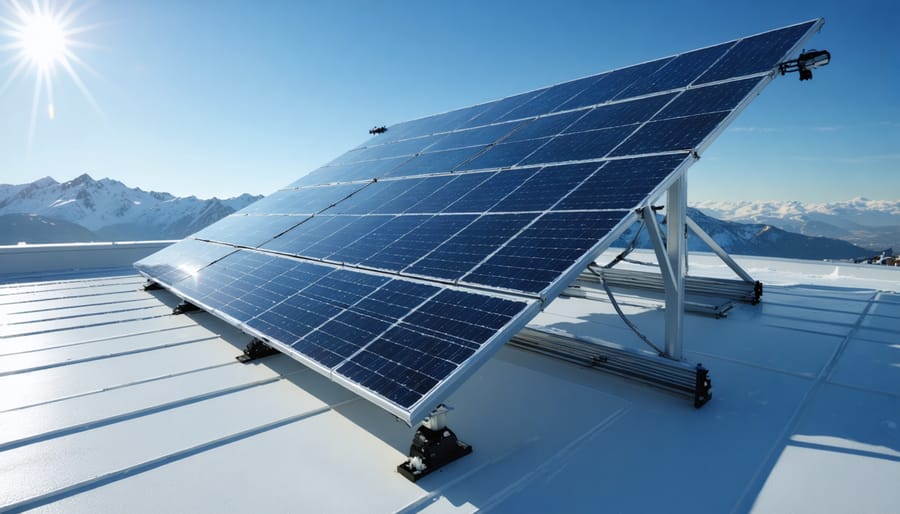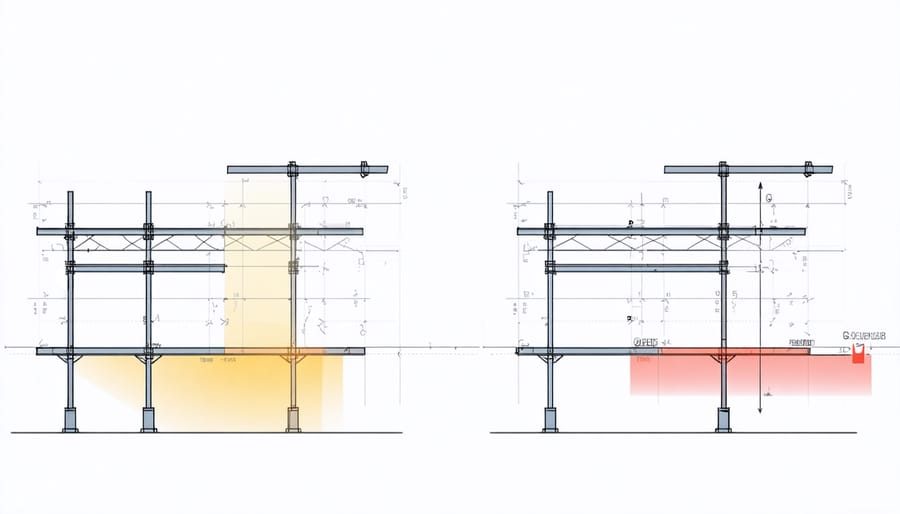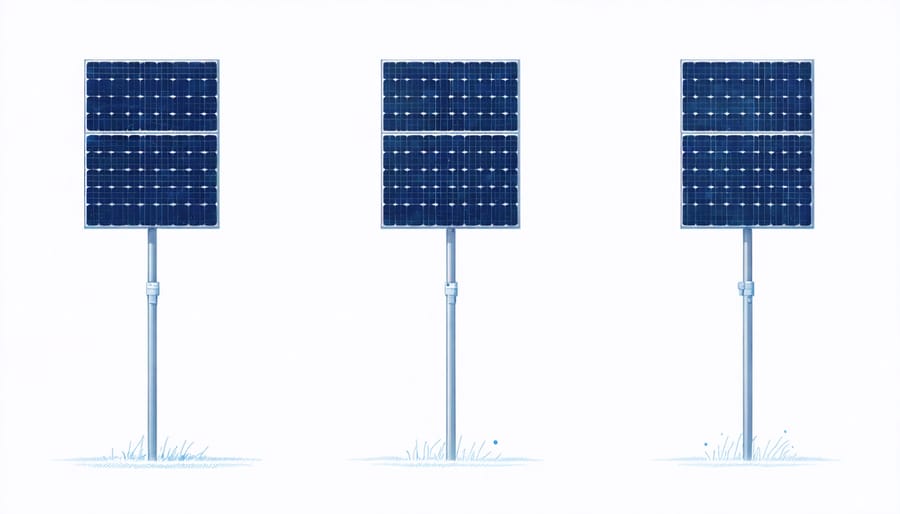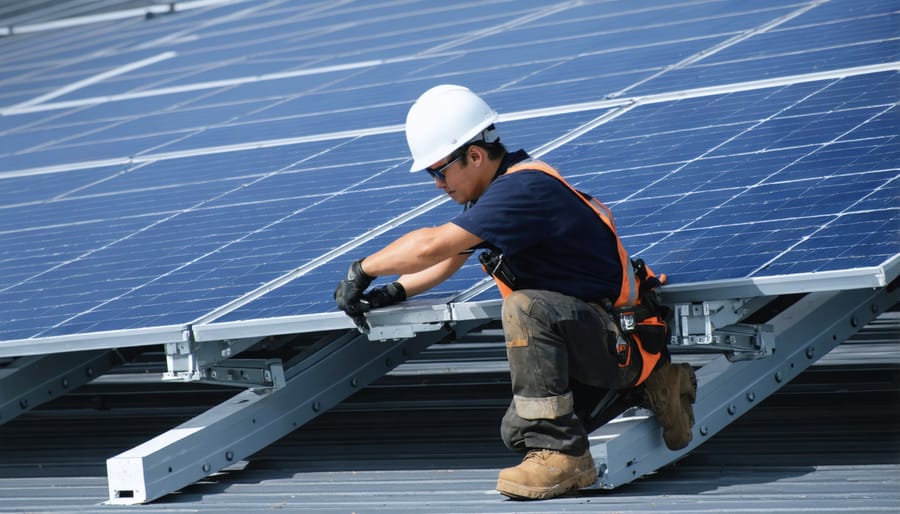Solar Panel Tilt Frames: Maximize Your Energy Yield with Perfect Positioning

Optimize your solar energy yield by up to 40% with precision-engineered tilt frames that position panels at the perfect angle for maximum sun exposure. These adjustable mounting systems have revolutionized rooftop and ground-mounted solar installations across Europe, transforming how we harness renewable energy. Modern tilt frames combine robust structural integrity with innovative design features, enabling solar arrays to capture optimal sunlight throughout changing seasons while withstanding diverse weather conditions. Whether retrofitting existing installations or planning new solar projects, understanding tilt frame technology is crucial for achieving peak system performance and maximizing return on investment. From single-axis tracking systems to fixed-tilt solutions, today’s market offers versatile options that adapt to both residential and commercial applications, ensuring every solar installation reaches its full potential.
Understanding Solar Panel Tilt Frames
Fixed vs. Adjustable Tilt Frames
When choosing solar panel mounting frames, one of the most crucial decisions is selecting between fixed and adjustable tilt options. Fixed tilt frames offer a straightforward, cost-effective solution with minimal maintenance requirements. They’re installed at an optimal angle based on your geographical location and remain in that position permanently, making them ideal for installations where consistent year-round performance is the priority.
Adjustable tilt frames, while typically more expensive initially, provide enhanced flexibility and potential for increased energy yield. These systems allow for seasonal angle adjustments, typically 2-4 times per year, to maximize solar exposure as the sun’s path changes. This adaptability can result in 5-15% higher energy production compared to fixed installations, particularly in regions with significant seasonal variations in sun angle.
For most European residential installations, fixed tilt frames offer an excellent balance of cost-effectiveness and reliability. However, commercial installations or systems in locations with extreme seasonal variations might benefit more from adjustable solutions, especially when regular maintenance access is readily available.

Material Quality and Durability
Solar panel tilt frames in Europe must withstand diverse weather conditions, from Nordic snow loads to Mediterranean heat. The choice of frame materials significantly impacts system longevity and performance. Anodised aluminum remains the preferred choice for its excellent corrosion resistance and lightweight properties, typically lasting 25-30 years in European climates. Galvanized steel offers robust durability and higher load-bearing capacity, particularly beneficial in regions with heavy snowfall. Both materials undergo rigorous testing to meet EU standards for wind resistance, structural integrity, and weather exposure. Premium frames feature additional protective coatings and marine-grade finishes, ensuring reliable performance even in coastal areas where salt exposure poses additional challenges.
Optimizing Solar Panel Angles

Seasonal Adjustment Benefits
Adjusting your solar panel tilt frames according to seasonal changes can significantly boost your system’s energy yield throughout the year. In Europe, where solar angles vary considerably between seasons, proper adjustment can increase overall energy production by 20-30% compared to fixed installations.
During summer months, a flatter tilt angle (around 20-30 degrees) maximizes exposure to the high-riding sun, while steeper angles (40-50 degrees) are optimal for winter when the sun travels a lower path across the sky. This seasonal optimization not only improves daily energy generation but also helps prevent snow accumulation during winter months.
Many modern tilt frame systems feature easy adjustment mechanisms that allow for periodic angle changes without specialized tools or expertise. While quarterly adjustments (spring, summer, autumn, winter) are most common, even bi-annual adjustments can notably improve system performance. This flexibility is particularly valuable in regions with distinct seasonal variations, such as Northern and Central Europe, where optimized tilt angles can help maintain consistent energy production throughout the year.
Geographic Considerations
In Europe, the optimal tilt angle for solar panels varies significantly based on geographical location, with northern regions typically requiring steeper angles than southern areas. For instance, installations in Nordic countries like Sweden or Norway often utilize tilt angles between 40-50 degrees to maximize solar gain during shorter winter days. In contrast, Mediterranean regions such as Spain or Greece generally perform best with tilt angles between 30-35 degrees.
Local climate patterns also influence tilt frame selection. Areas with heavy snowfall benefit from steeper angles (45 degrees or more) to promote natural snow shedding, while regions with strong winds might require more robust tilt frame systems with additional reinforcement. Coastal locations need corrosion-resistant materials due to salt exposure.
The latitude of your location plays a crucial role in determining the ideal tilt angle, with a general rule of thumb being latitude minus 10 degrees for summer optimization, or latitude plus 10 degrees for winter optimization. Urban environments may require additional considerations, such as adjusting tilt angles to minimize shading from nearby buildings or to comply with local building regulations and aesthetic requirements.
Installation and Maintenance
Professional Installation Requirements
Professional installation of solar panel tilt frames requires adherence to strict safety standards and building regulations. Installers must possess relevant certifications and thoroughly understand proper installation techniques to ensure optimal system performance and longevity.
Key requirements include structural assessment of the installation surface, precise angle calculations based on geographical location, and proper load distribution. Installers must use appropriate personal protective equipment (PPE) and follow local working-at-height regulations.
The installation team should verify compatibility between the tilt frame system and the chosen solar panels, ensuring all mounting hardware meets regional wind and snow load requirements. Regular quality checks during installation are essential to confirm proper torque settings and weatherproofing measures.
Documentation of the installation process, including photographic evidence and technical specifications, should be maintained for warranty purposes and future maintenance reference.

Long-term Maintenance Tips
Regular maintenance ensures your solar panel tilt frames continue performing optimally for decades. Conduct quarterly visual inspections of all mounting points, checking for any signs of corrosion or loose bolts. During spring and autumn, when adjusting tilt angles, take the opportunity to thoroughly clean the frame structure and remove any debris that might have accumulated.
Annually, inspect all nuts and bolts for proper torque specifications, particularly after extreme weather events. Apply appropriate anti-corrosion treatments to metal components every two years, especially in coastal areas where salt exposure is higher. Keep detailed maintenance records and photograph any concerns for professional assessment.
For automated tilt systems, schedule professional servicing of motors and control systems annually. Lubricate moving parts according to manufacturer specifications, typically every six months. Watch for unusual sounds or resistance during operation, as these may indicate developing issues requiring attention.
Remove vegetation growth around ground-mounted frames and ensure drainage channels remain clear to prevent water accumulation at the base. Consider scheduling professional inspections every three years for comprehensive structural assessment and safety verification.
The selection and implementation of appropriate solar panel tilt frames play a crucial role in maximizing the efficiency and longevity of your solar energy system. By carefully considering factors such as geographical location, local climate conditions, and specific installation requirements, you can achieve optimal energy yields throughout the year. Proper tilt frame solutions not only enhance system performance but also contribute to structural integrity and ease of maintenance. For European installations, the right tilt frame configuration can mean the difference between good and exceptional solar energy production, particularly during varying seasonal conditions. When combined with professional installation and regular maintenance, quality tilt frames represent a smart investment in your solar energy future, ensuring sustainable power generation and reliable returns on investment for years to come. Remember that while initial costs may vary, the long-term benefits of a well-designed tilt frame system far outweigh the investment through improved efficiency and system durability.
Leave a Reply